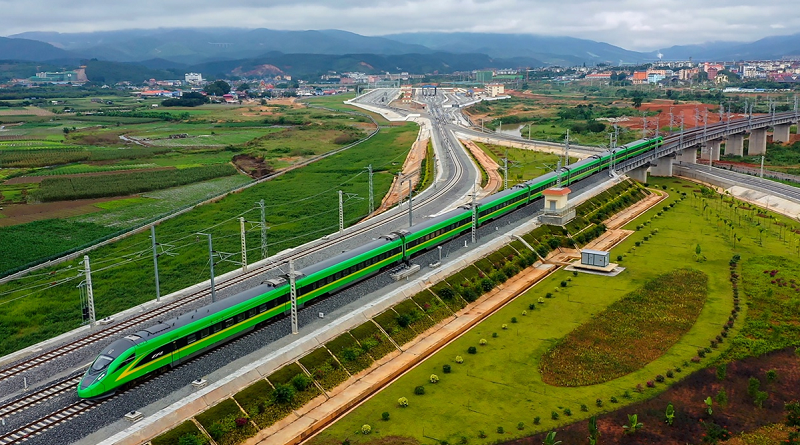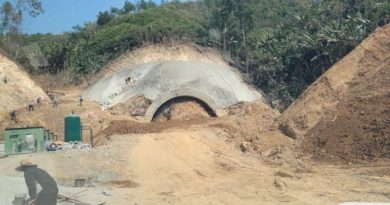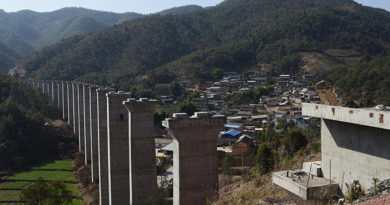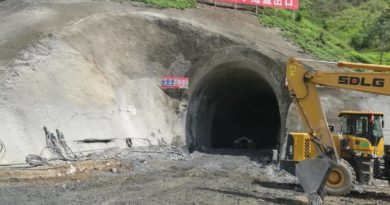China-Laos Railway Extending Through To Thailand
Source: silkroadbriefing
Expansion of the route makes Thailand a ‘China Plus One’ Option
The China-Laos Railway which opened late last year, is being extended through to Thailand. The Laos section has proven so popular that the frequency of train service has had to be increased several times due to demand.
Six months after it opened, China’s State Railway Group said the route has delivered more than 4 million tonnes of freight as at the end of May. The route also handled over 3.2 million passenger trips. Since December 2021, 21 Chinese regions have designated cross-border trains for freight transport along the railway, with goods including fertilizers, daily necessities, electronics and fruits. The 1,035-km China-Laos Railway connects China’s Kunming with the Laotian capital Vientiane.
That has raised expectations for Thailand, with former Thai Deputy Prime Minister Pinit Jarusombat saying that the China-Laos railway has provided a new logistics option for Thailand’s trade with China. “It totally exceeded expectations. The Sino-Thai railway is currently under construction and Thailand expects it to be operational very soon.”
Once it is completed, a transportation corridor through all three countries will significantly increase the speed of movement of people and goods between Southeast Asia and China, he added.

The China-Laos-Thailand (CLT) route runs south from Vientiane, crosses the border to Thailand at Nong Thai, and its Free Trade Zone, and continues to Bangkok. The route passes through some of Thailand’s primary agricultural regions, although Free Trade Zones are also dotted along the route – prime areas of interest for foreign investors wanting to diversify away from China, yet retain consumer market access to it. Thailand is a member of ASEAN which has a Free Trade Agreement with China, meaning goods can be shipped both ways, tariff free.
In addition to this, Thailand also has 62 Industrial Zones, which offer refunds of VAT and exemption from import tariffs, allowing local Thai components to be matched with imported components from China, as well as neighbouring Cambodia, Laos, and Vietnam. Final products can then be exported to non-Asian markets such as the United States or Europe, sold onto the Thai domestic market, or reexported to ASEAN members states. ASEAN also has a Free Trade Agreement with India.

Pinit is also optimistic about the development of cross-border railway logistics and the prospect of Thailand as a regional hub. Citing the example of Thai agricultural products exported to China, he highlighted that the China-Laos railway accelerates the transportation speed of chilled and frozen fruits and vegetables. In addition to infrastructure construction, Pinit said the route also brings investment and business opportunities, with an increasing number of Chinese companies entering Thailand in various fields, such as durian planting, rubber businesses, as well as automobile, energy, and high-tech industries.
He mentioned that the Thai government attaches great importance to the development of the relationship with China, and both countries need to further strengthen cooperation in businesses, investment, and tourism.
Current China-Thai bilateral trade reached about US$131 billion in 2021, and grew 33% that year. Thailand’s Deputy Prime Minister and Commerce Minister Jurin Laksanavisit has stated that Thailand hoped to further expand exports to China, and the CLT railway will certainly assist. That makes Thailand an ideal candidate as a “China Plus One” supply chain hub where it can compete with Vietnam.
Laksanavisit stated that Thailand and China have enjoyed strong trade relations and diverse types of cooperation, including bilateral trade agreements, the ASEAN-China Free Trade Agreement (FTA), and the Regional Comprehensive Economic Partnership (RCEP).
“We do hope to see a big gain from RCEP,” he said, which, as the world’s largest FTA, will benefit Thailand in terms of bigger market access as well as tariff reductions. RCEP entered into force from January 1st this year, which enables “Thailand and other member countries including China to share the prosperity.” he said.
In terms of fruits and agricultural products, Thailand is ready to use the CLT route to transport fruits into China after the sanitary and phytosanitary facility at the port of Mohan in southwest China’s Yunnan Province is completed by Q3 2022.
The entire Vientiane-Bangkok route is expected to be fully operational by 2026, although certain sections connecting with the Laos-China railway will be completed prior to this.




